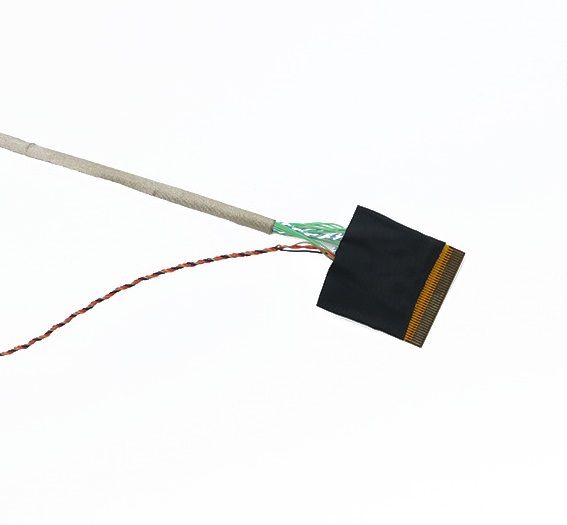How to production EDP Cables ?

The production of EDP cable (Embedded DisplayPort cable) is a complex and delicate process involving multiple steps and specialized technology. The following is a detailed introduction to the production process of EDP cable to comprehensively analyze its production process.
First, raw material preparation
The production of EDP cable begins with the preparation of raw materials. The main raw materials include conductors (usually tinned or silver-coated copper wire to improve signal transmission performance), insulating materials (such as polyethylene, PVC or fluoroplastic to wrap conductors to prevent short circuits and signal interference), shielding materials (such as aluminum foil or woven mesh to reduce electromagnetic interference), and sheathing materials (usually PVC or polyurethane). Used to protect the entire cable).
Second, conductor production
1. Wire drawing: The large-diameter copper is drawn by the wire drawing machine to make fine copper wire that meets the requirements.
2. Tin/silver plating: In order to improve the conductivity and oxidation resistance of the conductor, the copper wire is tinned or silver plated.
Third, insulation layer production
1. Extrusion: The molten insulating material is evenly coated on the conductor through the extruder to form an insulating layer.
2. Cooling and curing: The extruded insulation layer needs to undergo a cooling and curing process to ensure its stability and durability.
Four, the skein and shielding
1. Twisted: In order to improve the anti-interference ability of the signal, a number of insulated conductors are twisted according to certain rules.
2. Shielding: Wrap a shielding material, such as aluminum foil or woven net, on the outer side of the conductor after the twisted to reduce electromagnetic interference and signal attenuation.
5. Assembly and molding
1. Arrange and secure: Arrange the shielded twisted cables in a certain sequence and secure them using tape or heat shrink tubing.
2. Filling: Fill the gap inside the cable with filler, such as polypropylene rope or polyester fiber, to increase the roundness and tensile strength of the cable.
3. Sheath extrusion: The sheath material is extruded in the outermost layer of the cable to protect the internal conductor, insulation layer and shielding layer.
6. Testing and inspection
1. Conduction test: Use a professional conduction tester to detect whether each conductor of the cable is conduction to ensure that there is no break or short circuit phenomenon.
2. Insulation resistance test: Measure the insulation resistance value of the cable to ensure that the quality of the insulation layer meets the standard.
3. Attenuation test: Detect the attenuation of the signal in the cable to ensure the quality of signal transmission.
4. Shielding effectiveness test: Measure the shielding effectiveness of the cable to ensure its ability to suppress electromagnetic interference.
7. Processing and customization
1. Connector production: According to customer needs, make EDP connectors to ensure perfect docking with DP connectors of display screen and motherboard.
2. Length cutting: Cut the length of the cable based on the application scenario and device requirements.
3. Identification and packaging: Print or paste identification information on the cable, such as model, specification, production date, etc., and package it for transportation and storage.
8. Quality control and continuous improvement
In the whole production process, quality control is a crucial link. Through the establishment of a strict quality management system, strict inspection and testing of raw materials, semi-finished products and finished products to ensure that product quality meets relevant standards and customer requirements. At the same time, we constantly collect and analyze customer feedback, and make continuous improvement and optimization of products to meet the changing market demand and technological development.
To sum up, the production process of EDP cable involves a number of complex steps and expertise, including raw material preparation, conductor production, insulation layer production, stranding and shielding, assembly and molding, testing and inspection, processing and customization, quality control and continuous improvement. Each link requires strict control and fine operation to ensure that the quality and performance of the final product meet the standards.
